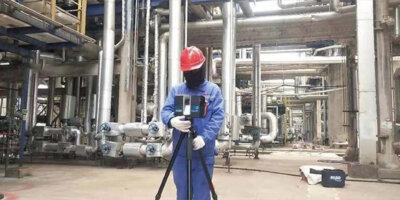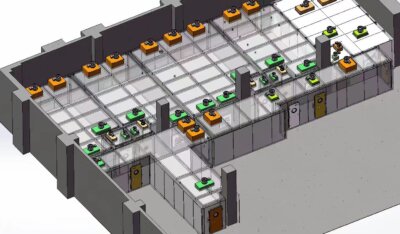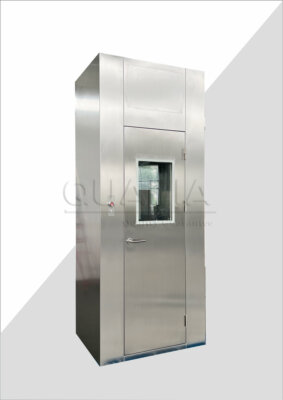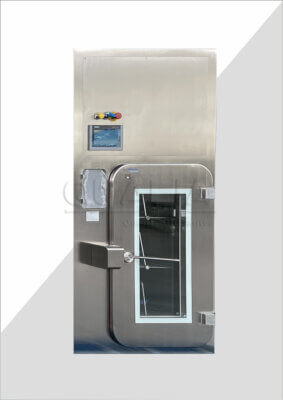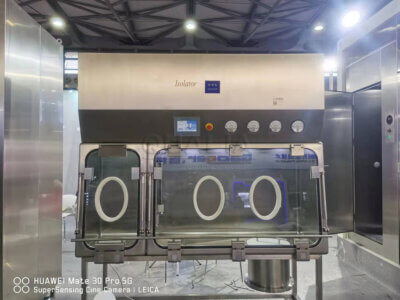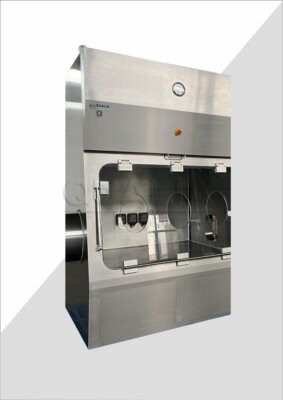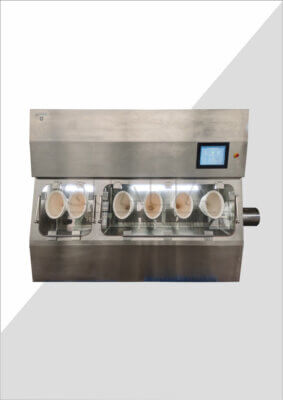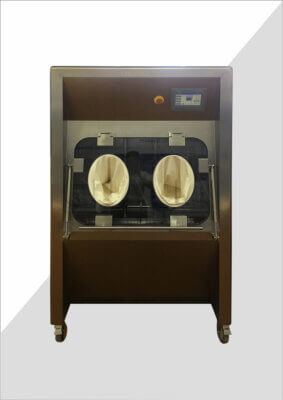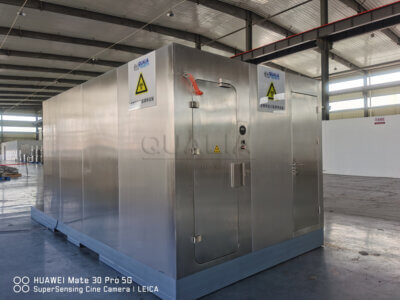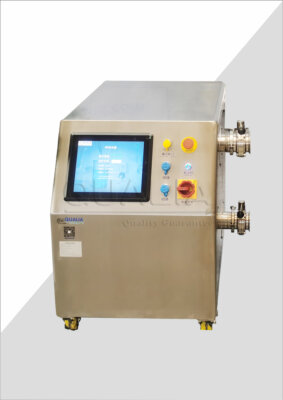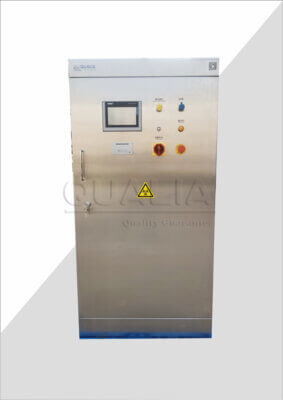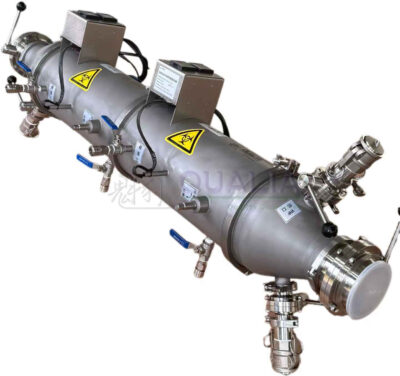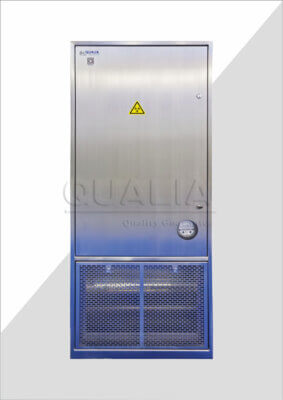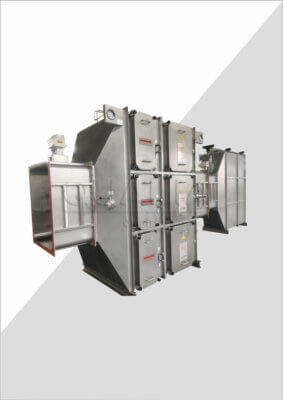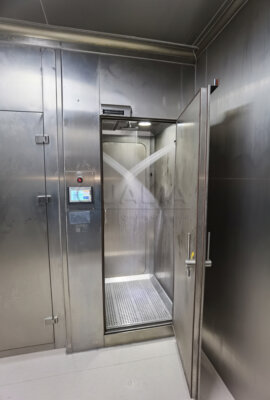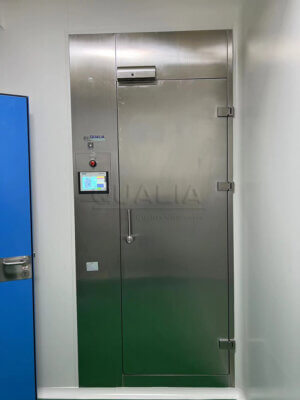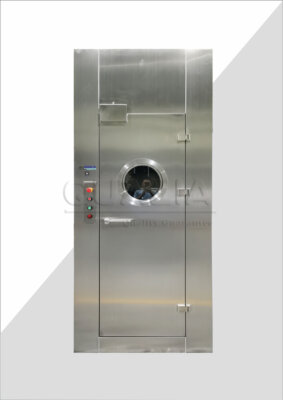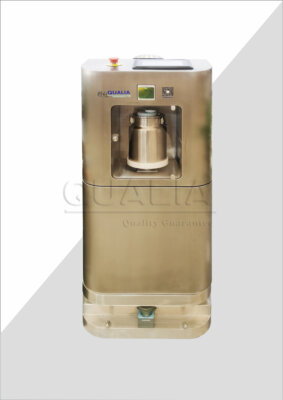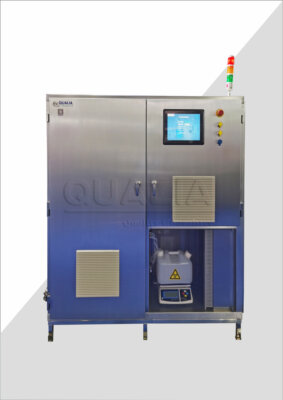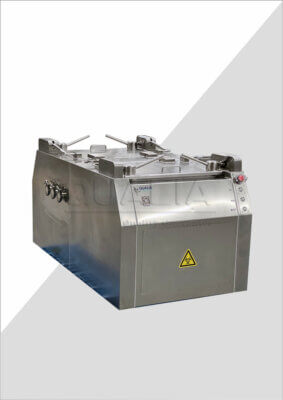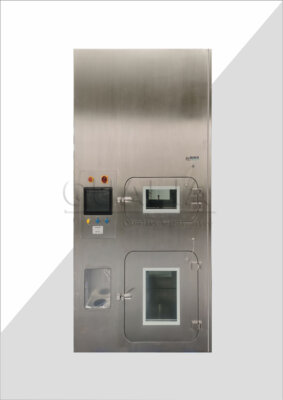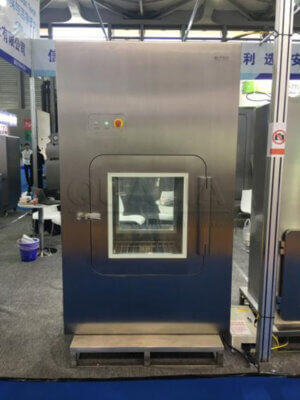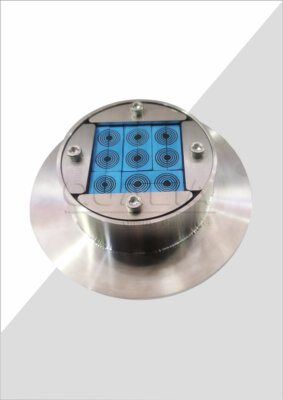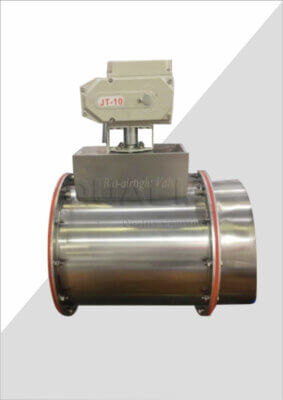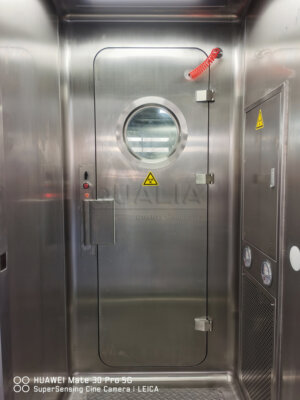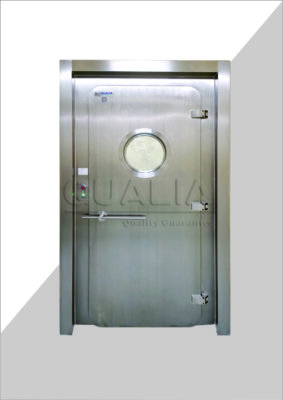In an era where rapid response and mobility are paramount, the need for reliable energy solutions in mobile Biosafety Level (BSL) laboratories has never been more critical. As the world faces increasingly complex biological challenges, from emerging infectious diseases to bioterrorism threats, the ability to deploy fully functional, high-containment laboratories to any location has become a game-changer in global health security.
Mobile BSL lab power systems are at the heart of this revolution, providing the lifeblood that keeps these advanced facilities operational in even the most remote or challenging environments. These sophisticated power solutions ensure that critical equipment, containment systems, and safety protocols remain uncompromised, allowing scientists and researchers to work safely and effectively regardless of their location.
As we delve into the world of mobile BSL lab power, we'll explore the intricate web of technologies and innovations that make these portable powerhouses possible. From advanced battery systems to smart grid integration, and from renewable energy solutions to fail-safe backup generators, we'll uncover the multi-layered approach that guarantees uninterrupted power supply in scenarios where failure is simply not an option.
The landscape of mobile BSL lab power systems is rapidly evolving, driven by advancements in energy storage, distribution, and management technologies. This evolution is not just about providing power; it's about creating intelligent, resilient, and sustainable energy ecosystems that can adapt to the unique challenges posed by mobile high-containment laboratories.
Mobile BSL lab power systems are the cornerstone of modern biothreat response capabilities, enabling rapid deployment of fully functional, high-containment laboratories to any location worldwide, while maintaining the highest standards of safety and operational efficiency.
What are the key components of a mobile BSL lab power system?
At the core of every mobile BSL laboratory lies a sophisticated power system that ensures continuous, reliable operation in any environment. These systems are designed with redundancy and resilience in mind, incorporating multiple layers of power generation, storage, and distribution to maintain critical functions under all circumstances.
The primary components of a mobile BSL lab power system typically include a main generator, often diesel-powered for its reliability and energy density, coupled with an advanced battery storage system. This combination allows for immediate power availability and smooth transitions between power sources. Additionally, many modern systems incorporate renewable energy sources, such as solar panels or wind turbines, to enhance sustainability and extend operational autonomy.
One of the most crucial elements of these power systems is the uninterruptible power supply (UPS), which provides instantaneous backup power in case of primary system failure. This ensures that critical containment systems, such as negative air pressure and HEPA filtration, remain operational at all times, preventing potential biohazard releases.
QUALIA's state-of-the-art mobile BSL lab power systems integrate cutting-edge energy technologies to provide unparalleled reliability and efficiency, featuring smart power management systems that can automatically switch between multiple power sources to maintain optimal performance.
| Component | Function | Typical Capacity |
|---|---|---|
| Main Generator | Primary power source | 50-200 kW |
| Battery Storage | Energy buffer and backup | 100-500 kWh |
| UPS | Instantaneous backup | 10-50 kVA |
| Solar Panels | Supplementary power | 5-20 kW |
The integration of these components creates a robust and flexible power ecosystem capable of adapting to various operational scenarios. From remote field deployments to urban emergency response, mobile BSL lab power systems ensure that critical research and containment functions can be carried out without compromise, regardless of the external environment.
How do mobile BSL lab power systems ensure continuous operation?
Continuity of power is not just a convenience in mobile BSL laboratories; it's a critical safety requirement. These facilities house dangerous pathogens and conduct sensitive research that cannot afford interruptions. To ensure continuous operation, mobile BSL lab power systems employ a multi-layered approach to power reliability.
At the heart of this approach is a sophisticated power management system that constantly monitors power quality, load, and system health. This system can seamlessly switch between power sources, prioritize critical systems, and manage load shedding if necessary, all without human intervention. Additionally, redundant power paths and distribution systems ensure that even in the case of component failure, power continues to flow to essential equipment.
Another key feature is the implementation of smart load management. This system categorizes equipment based on its criticality and power requirements, ensuring that in scenarios where power might be limited, the most crucial systems receive priority. This might mean temporarily reducing power to non-essential systems to maintain full functionality of containment and safety equipment.
Mobile BSL lab power systems from QUALIA incorporate advanced AI-driven predictive maintenance algorithms, which can forecast potential system failures and initiate preventive measures, further enhancing the reliability and continuity of power supply in critical containment environments.
| Power Source | Response Time | Duration |
|---|---|---|
| UPS | Instantaneous | 5-15 minutes |
| Battery Storage | < 1 second | 2-8 hours |
| Main Generator | < 30 seconds | Days-Weeks |
| Solar + Battery | Continuous | Indefinite |
The combination of these technologies and strategies creates a virtually failsafe power ecosystem. By leveraging multiple power sources, intelligent management systems, and predictive maintenance, mobile BSL lab power systems can maintain continuous operation even in the face of unexpected challenges or prolonged deployments in resource-limited environments.
What role does energy efficiency play in mobile BSL lab power systems?
Energy efficiency is a critical factor in the design and operation of mobile BSL lab power systems. Given the often limited resources available in field deployments, maximizing the utility of every watt of power is essential for prolonged operation and reduced environmental impact.
Modern mobile BSL labs incorporate a range of energy-efficient technologies and design principles. This includes high-efficiency LED lighting, variable speed drives for HVAC systems, and advanced insulation materials that reduce the energy required for climate control. Additionally, smart power management systems continuously optimize energy use across all systems, ensuring that power is directed where it's needed most and minimizing waste.
One of the most significant advancements in energy efficiency for mobile BSL labs is the integration of heat recovery systems. These systems capture waste heat from equipment and processes, using it to pre-heat incoming air or water, significantly reducing the overall energy demand for heating and decontamination processes.
The latest generation of Mobile BSL lab power systems achieves up to 40% higher energy efficiency compared to traditional fixed laboratories, through the integration of advanced materials, smart controls, and innovative heat recovery technologies.
| System | Energy Saving Potential |
|---|---|
| LED Lighting | 60-80% |
| Variable Speed HVAC | 30-50% |
| Heat Recovery | 20-40% |
| Smart Power Management | 10-25% |
By prioritizing energy efficiency, mobile BSL lab power systems not only extend operational capabilities but also reduce the logistical burden of fuel transport and minimize the environmental footprint of these critical facilities. This approach aligns with global sustainability goals while enhancing the practical deployment capabilities of mobile BSL laboratories in diverse and challenging environments.
How do renewable energy sources integrate with mobile BSL lab power systems?
The integration of renewable energy sources into mobile BSL lab power systems represents a significant leap forward in sustainability and operational flexibility. As global emphasis on reducing carbon footprints grows, the incorporation of solar, wind, and other renewable technologies is becoming increasingly prevalent in mobile laboratory designs.
Solar photovoltaic panels are often the primary renewable energy source in mobile BSL labs due to their reliability, scalability, and ease of deployment. These panels can be mounted on the laboratory's roof or set up as separate arrays, providing supplementary power during daylight hours and charging battery systems for use during nighttime or overcast conditions.
Wind turbines, while less common due to their dependence on specific environmental conditions, can offer significant power generation capabilities in suitable locations. Some advanced mobile BSL lab designs incorporate deployable wind turbines that can be set up alongside the laboratory to harness wind energy when available.
QUALIA's innovative mobile BSL lab power systems feature a hybrid renewable energy integration that automatically balances solar and wind inputs with traditional power sources, optimizing energy harvesting and storage to maximize operational autonomy in remote deployments.
| Renewable Source | Typical Capacity | Daily Energy Production |
|---|---|---|
| Solar PV Array | 10-30 kW | 40-120 kWh |
| Wind Turbine | 1-5 kW | 24-120 kWh |
| Fuel Cells | 5-15 kW | 120-360 kWh |
The integration of these renewable sources is managed by sophisticated control systems that balance power input from various sources, manage battery charging cycles, and optimize overall system efficiency. This integration not only reduces reliance on fossil fuels but also enhances the operational range and duration of mobile BSL labs, allowing for extended deployments in remote areas where traditional fuel supply might be challenging.
Furthermore, the use of renewable energy in mobile BSL labs aligns with global health initiatives' sustainability goals, demonstrating a commitment to environmental responsibility even in emergency response scenarios.
What safety features are incorporated into mobile BSL lab power systems?
Safety is paramount in the design and operation of mobile BSL lab power systems, given the critical nature of the work conducted within these facilities and the potential risks associated with power failures. Multiple layers of safety features are integrated to ensure uninterrupted power supply and to protect personnel, equipment, and the environment.
One of the primary safety features is the implementation of redundant power paths. This design ensures that if one power source or distribution line fails, alternative routes can immediately take over, preventing any disruption to critical systems. Additionally, intelligent load shedding capabilities allow the system to prioritize power to essential containment and safety equipment in the event of reduced power availability.
Advanced monitoring and alert systems are another crucial safety component. These systems continuously track power quality, system performance, and potential faults, alerting operators to any issues before they become critical. Many modern systems also incorporate remote monitoring capabilities, allowing off-site experts to diagnose and potentially resolve issues without compromising containment.
The latest mobile BSL lab power systems feature advanced cybersecurity protocols and physical access controls, safeguarding against both digital and physical threats to ensure the integrity and reliability of power systems in high-security biocontainment environments.
| Safety Feature | Function | Response Time |
|---|---|---|
| Redundant Power Paths | Alternate power routes | Instantaneous |
| Intelligent Load Shedding | Prioritize critical systems | < 1 second |
| Fault Detection & Isolation | Identify and isolate issues | < 100 milliseconds |
| Cybersecurity Protocols | Protect against digital threats | Continuous |
Furthermore, these power systems are designed with fail-safe mechanisms that ensure all containment systems default to their safest state in the event of a complete power loss. This might include automatic sealing of containment areas, activation of backup air filtration systems, and initiation of emergency shutdown procedures for sensitive equipment.
The integration of these safety features creates a robust and resilient power ecosystem that not only ensures continuous operation but also maintains the highest standards of biosafety and biosecurity in mobile laboratory environments.
How are mobile BSL lab power systems maintained and serviced in the field?
Maintaining and servicing mobile BSL lab power systems in the field presents unique challenges due to the critical nature of the facility's operations and the often remote or hazardous locations of deployment. To address these challenges, mobile BSL labs are designed with a focus on modularity, accessibility, and remote diagnostics capabilities.
Modular design allows for quick replacement of faulty components without compromising the entire power system. Critical components like power inverters, battery modules, and control systems are often designed as plug-and-play units that can be swapped out with minimal downtime. This approach also facilitates easier upgrades as technology advances.
Remote diagnostics and predictive maintenance technologies play a crucial role in field servicing. Advanced sensors and IoT-enabled devices continuously monitor system performance, allowing for early detection of potential issues. This data is analyzed by AI algorithms that can predict failures before they occur, enabling proactive maintenance scheduling.
QUALIA's mobile BSL lab power systems incorporate cutting-edge augmented reality (AR) technology for remote troubleshooting, allowing off-site experts to guide on-site personnel through complex maintenance procedures, ensuring optimal system performance even in challenging field conditions.
| Maintenance Approach | Benefit | Implementation |
|---|---|---|
| Modular Design | Quick component replacement | Plug-and-play units |
| Remote Diagnostics | Early issue detection | IoT sensors & AI analysis |
| Predictive Maintenance | Prevent failures | Machine learning algorithms |
| AR-guided Servicing | Expert remote assistance | Wearable AR devices |
Field maintenance kits are another essential aspect of mobile BSL lab power system upkeep. These kits contain common spare parts, specialized tools, and detailed maintenance manuals, allowing on-site personnel to perform routine maintenance and minor repairs without external support.
Additionally, many mobile BSL labs are equipped with self-diagnostic systems that can perform regular health checks and automatically adjust system parameters to optimize performance. This reduces the need for frequent manual interventions and ensures that the power system operates at peak efficiency even in prolonged field deployments.
What future innovations are on the horizon for mobile BSL lab power systems?
The field of mobile BSL lab power systems is rapidly evolving, driven by advancements in energy technology, materials science, and artificial intelligence. These innovations promise to make future mobile laboratories more efficient, reliable, and adaptable to a wider range of deployment scenarios.
One of the most promising areas of development is in advanced energy storage technologies. Solid-state batteries, with their higher energy density and improved safety profiles, are poised to revolutionize mobile power systems. These batteries could significantly extend the operational range of mobile BSL labs while reducing weight and enhancing safety.
Another exciting innovation is the integration of artificial intelligence and machine learning into power management systems. These technologies will enable more sophisticated predictive maintenance, real-time optimization of power distribution, and adaptive load management based on historical usage patterns and current operational needs.
The next generation of mobile BSL lab power systems will likely incorporate quantum sensors for ultra-precise power quality monitoring and smart grid technologies for seamless integration with local power infrastructure, further enhancing reliability and efficiency in diverse deployment scenarios.
| Future Technology | Potential Impact | Estimated Timeframe |
|---|---|---|
| Solid-state Batteries | 2-3x energy density | 3-5 years |
| AI Power Management | 30-50% efficiency increase | 1-3 years |
| Quantum Sensors | 10x more precise monitoring | 5-10 years |
| Smart Grid Integration | 20-40% improved stability | 2-4 years |
Advancements in materials science are also expected to play a significant role in future mobile BSL lab power systems. New lightweight, high-strength materials could reduce the overall weight of power system components, making laboratories more easily transportable. Additionally, developments in thermoelectric materials could lead to more efficient heat recovery systems, further improving energy efficiency.
The integration of advanced hydrogen fuel cells is another area of potential innovation. These systems could provide a clean, efficient alternative to traditional generators, offering extended operational capabilities with minimal environmental impact.
As these technologies mature and converge, we can anticipate mobile BSL lab power systems that are not only more powerful and efficient but also more adaptable and resilient in the face of diverse global health challenges.
In conclusion, mobile BSL lab power systems represent a critical component in the global response to emerging biological threats and public health emergencies. These sophisticated energy solutions enable the rapid deployment of high-containment laboratories to any location worldwide, ensuring that vital research and diagnostic capabilities are available where and when they are needed most.
The multi-layered approach to power generation, storage, and distribution in mobile BSL labs provides unparalleled reliability and adaptability. From advanced battery systems and smart grid integration to renewable energy solutions and fail-safe backup generators, these power systems are designed to maintain continuous operation in even the most challenging environments.
As we look to the future, ongoing innovations in energy technology, materials science, and artificial intelligence promise to further enhance the capabilities of mobile BSL lab power systems. These advancements will not only improve efficiency and reliability but also expand the operational range and flexibility of mobile laboratories, enabling more effective responses to global health challenges.
The importance of mobile BSL lab power systems extends beyond their technical capabilities. They represent a crucial link in the chain of global health security, enabling rapid response to emerging threats and facilitating critical research in areas where traditional laboratory infrastructure may be lacking. As such, continued investment and innovation in this field are essential for maintaining and enhancing our collective ability to address future biological challenges.
In an increasingly interconnected world, where the threat of pandemics and emerging diseases knows no borders, mobile BSL lab power systems stand as a testament to human ingenuity and our commitment to safeguarding global health. These powerful, portable solutions embody the convergence of cutting-edge technology and public health imperatives, ensuring that wherever biological threats may emerge, we have the tools and capabilities to respond swiftly and effectively.
External Resources
Mobile BSL-3/BSL-4 Module Laboratories – Detailed information on QUALIA's mobile BSL-3/BSL-4 laboratories, including power system specifications and deployment capabilities.
Laboratory Design: Power and Reliability – Comprehensive article on the importance of reliable power systems in laboratory settings, with insights applicable to mobile BSL labs.
Modular Biocontainment Laboratories – Overview of modular biocontainment laboratory designs, including information on integrated power and HVAC systems.
Emergency and Standby Power Systems for Health Care Facilities – NFPA guidelines on emergency power systems in healthcare settings, providing context for mobile BSL lab power requirements.
Biosafety in Microbiological and Biomedical Laboratories (BMBL) 6th Edition – CDC's comprehensive guide on biosafety practices, including information on facility design and safety systems relevant to mobile BSL labs.
Mobile Laboratory Systems for Biosurveillance – WHO publication on mobile laboratory systems, discussing power requirements and operational considerations in field deployments.
- Advanced Energy Storage for Mobile Applications – U.S. Department of Energy's overview of advanced battery technologies, with implications for mobile BSL lab power systems.
Related Contents:
- Emergency Response: Mobile BSL Labs in Action
- High-Tech Integration in Mobile BSL-3/BSL-4 Labs
- Energy Efficiency in Mobile Biosafety Laboratories
- Unveiling Mobile BSL-3 and BSL-4 Lab Differences
- Revolutionizing Containment: Mobile BSL-3/BSL-4 Module Labs
- The Future of Portable High-Containment Labs
- Transportable BSL-3 Equipment: Essential Gear
- Advancing Biosafety: Mobile BSL-3/BSL-4 Module Laboratories
- Safeguarding Science: Mobile BSL-3/BSL-4 Laboratory Protocols


